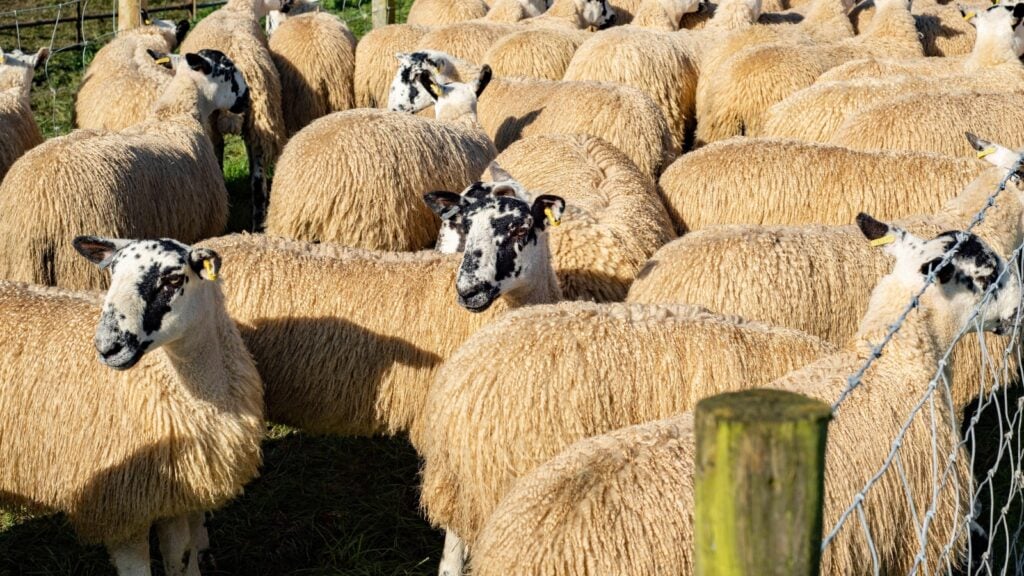We know that a plant-based diet improves short-term memory. But what about over the long-term? How about what happened 200 years ago this month?
It’s only a half-serious question: I can’t imagine that even we vegans are so healthy we can remember that far back! But remembering the past is an important task this month. Last Friday, July 22nd was the 200th anniversary of something remarkable that happened for animals.
It was the bicentenary of Martin’s Act, otherwise known as the Cruel Treatment of Cattle Act 1822. This was the first ever piece of parliamentary legislation to protect animals from cruelty. It is no understatement to say that nearly every piece of legislation and law around the world to prevent cruelty to animals stems from that day.
It was celebrated with a major animal law conference, as well as the launch of a new audio documentary Martin’s Act at 200, produced by the Culture and Animals Foundation (and narrated by me).
About Martin’s Act
So why is it called Martin’s Act? How did this piece of legislation come about? And why is it so important we remember advocacy for animals from the past?
The piece of legislation is named after the Member of Parliament who proposed it, Richard Martin. He was also known by his nickname “Humanity Dick” for his work ending the suffering of (some) animals and other humans.
Born in 1754, Martin was an Irish landowner and the most famous duellist of his time. He came to represent Galway in the new British and Irish parliament. He was a great lover of animals and was distressed by their cruel treatment—although he ate meat and hunted. (Martin could have been vegan—there were others at the time, like Lewis Gompertz.)
But Martin hated seeing cruelty, at least. With the growth of urbanization in the 19th century, more cows and sheep were driven into London’s Smithfield market, from as far away as Scotland, to be slaughtered for meat. The drovers who brought them were not shy of using sticks to beat the animals. This was all visible to Martin and other city dwellers—as was the horrific cruelty of bear and badger baiting at the notorious Westminster Pit.
So Martin, with colleagues in the Houses of Parliament, made it his mission to bring in new laws to protect animals from the worst cruelty. Most of these efforts failed, but Martin’s Act was the first to succeed. Our new audio doc dramatized the full history, with animal advocate and actor Peter Egan as the voice of Martin.
Why it’s important to remember Martin’s Act
But why is it important to remember these laws from 200 years ago? What relevance do they have to today’s efforts to make the world a safer, just place for animals to live out their birthright and flourish? There are at least three reasons.
First, as the philosopher George Santayana wrote, “those who cannot remember the past are condemned to repeat it.”
As mentioned above, Martin and his fellow advocates had many more failed attempts to get legislation passed than their successes. So learning from both success and failure can help plan more effective interventions today.
Sadly, the losses keep coming. Only last month the Nonhuman Rights Project’s efforts to secure legal personhood for Happy the elephant was rejected in a New York courtroom. But that isn’t to say it was a total failure, as the case did make progress.
It is a common criticism of today’s animal advocacy movement that we do not know enough about our history to know what has failed and what has succeeded, to learn. The Save Movement was not the first to bear witness. DxE and Animal Rebellion were not the first to perform nonviolent civil disobedience. Surge was not the first to organize marches.
The more we can learn from the past, the more we can shape impactful strategies today. Those movements that do pay attention to how things were done in the past tend to be more effective in how they do things now. For example, much of Animal Rebellion’s success was down to its founder Dan Kidby’s grounding in nonviolence and the lessons brought in from the American civil rights movement.
Second, by studying and learning the tactics, language, and opposition these advocates faced, we can think more deeply and fully about how our tactics of today can work.
I went back and read the speeches of those who were advocating for animals 200 years and longer ago. A speech by Lord Thomas Erskine in the House of Lords from 1809 arguing for animal rights could have been delivered today, it is so relevant and contemporary. (And in many cases, is better than the arguments being made today.)
At the very least, when those opposing better conditions for animals are using the same arguments as the privileged elite politicians of 200 years ago, we can point out how little they have evolved in the intervening years.
Third and finally, it’s important to know our legal history (in whichever country you live). By knowing this, we can understand that it is through the law that improvements for the most number of animals have been made.
The importance of legal challenges
So, why do animal advocates spend relatively little time making legal challenges or helping develop new legislation? As Jane Tredgett, founder of Humane Being and behind Scrap Factory Farming’s judicial review of intensive animal agriculture, told me for the audio documentary, “yes campaigns, protests, marches, they all have their place, but there are far too few legal challenges” for changing the lives of animals.
Is it because we don’t know enough about legislation for animals? Or are scared of the law? That is changing. There are animal law schools, centers, and lawyers emerging all the time, knowledgeable and skilled in employing the law for animals in the courts.
But perhaps the area we can improve most is politics itself—where the laws are made. Animal advocate Kim Stallwood, who gave the keynote lecture on Martin’s Act at the major animal law conference this week, has called for much more attention to be given to working for animals within the political sphere.
It is here that old laws can be challenged and new laws made, such as the Animal Sentience (2022) Act. But that means animal advocates need to put much more time and effort into convincing lawmakers to propose new laws for animals. It means building political alliances, not being antagonists. It is often about compromise, too. Are we willing to do that?
For “Humanity Dick” Martin, the law was a tool for helping stop cruelty to animals. Two hundred years later, animals are still suffering. Most of our laws are anti-cruelty and not rights-based. As the case for Happy recently showed us, there is still so much further to go. But it is also good to remember and recognize how far we have come.






